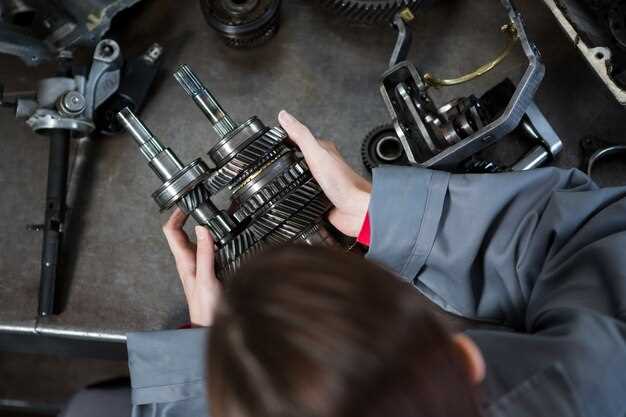
Effective maintenance of your race suspension system is crucial for achieving optimal performance on the track. The suspension plays a vital role in how your vehicle handles, absorbs shocks, and maintains contact with the ground. With proper care, you can enhance your car’s agility, stability, and overall speed, which can make a significant difference in competitive racing environments.
Regular inspection and servicing of your suspension components are essential for preventing wear and ensuring that all parts function smoothly. Emphasizing care in this area not only prolongs the lifespan of the components but also guarantees that your car handles as intended. Over time, wear and tear can occur due to the demanding nature of racing, making it imperative to keep a close eye on bushings, dampers, and springs.
In this article, we will explore various tips and techniques for properly maintaining your race suspension system. With a focus on preventative care, we will cover the importance of lubrication, alignment checks, and timely replacements, ensuring that you achieve the best possible performance every time you hit the track.
Regular Inspection of Shock Absorbers

Regular inspection of shock absorbers is crucial for ensuring optimal performance of your vehicle’s suspension system. These components play a vital role in maintaining stability, comfort, and safety during your drives. Here are essential steps to undertake during inspections:
-
Visual Inspection:
- Check for any signs of leakage. Oil stains around the body of the shock can indicate a failure.
- Inspect for physical damage, such as dents or cracks, that could compromise performance.
- Look for rust or corrosion, which can weaken attachment points and affect function.
-
Performance Testing:
- Conduct a bounce test by pushing down on each corner of your vehicle. It should return to its resting height without excessive bouncing.
- Monitor any unusual noises, such as clunking or squeaking, during operation which could signal underlying issues.
-
Mount and Bushing Condition:
- Inspect the mounts and bushings for wear. Cracks or degradation can lead to compromised suspension performance.
- Ensure that all fasteners are tight and secure to maintain structural integrity.
-
Professional Assessment:
- Consider having a professional mechanic perform a detailed inspection at regular intervals, especially after extended use or off-road driving.
- Utilize diagnostic equipment if available to assess the shock absorber’s performance under various conditions.
By conducting regular inspections of shock absorbers, you can prevent potential issues, enhance driving performance, and extend the lifespan of your vehicle’s suspension system. Keep your ride smooth and safe by prioritizing this critical maintenance task.
Choosing the Right Suspension Oils

Selecting the appropriate suspension oils is crucial for achieving optimal performance in your vehicle’s suspension system. The type of oil you choose affects the dampening characteristics, ride quality, and overall responsiveness of the suspension. When considering suspension oils, pay attention to viscosity ratings, which indicate the oil’s thickness at different temperatures. Higher viscosity oils provide better dampening for high-performance applications, while lower viscosity oils are often recommended for smoother rides.
Another key factor is the formulation of the oil. Synthetic oils generally offer superior performance compared to conventional oils, as they are engineered to resist breakdown under heat, reduce friction, and provide better lubrication. Additionally, look for oils that contain anti-foaming agents, which prevent air bubbles from forming and ensure consistent suspension performance.
It’s also important to evaluate the specific requirements of your suspension system, as different manufacturers may have unique recommendations based on the design of their components. Pay attention to the manufacturer’s specifications for fluid compatibility to avoid damaging seals and other critical parts. For those who regularly drive in extreme conditions, consider oils designed specifically for high-stress environments, which can provide better performance and longevity.
Ultimately, the right suspension oil will enhance your vehicle’s handling and comfort, ensuring a smoother and more controlled ride. Conduct regular checks and maintenance to determine the condition of your suspension oil, replacing it as necessary to maintain optimal performance.
Adjusting Spring Preload for Different Tracks
Adjusting the spring preload of your suspension system is essential for optimizing performance across various track conditions. Preload affects ride height, handling, and overall stability, ensuring your vehicle responds effectively to the unique characteristics of each track.
For tracks with smooth surfaces, a lower spring preload is often sufficient. This setting allows for enhanced grip and comfort, keeping the tires in contact with the asphalt, which is critical for maintaining speed through corners. Remember, less preload means the suspension can compress more easily, improving traction and overall handling.
Conversely, on bumpy or uneven tracks, increasing the spring preload can be beneficial. A higher preload helps prevent the suspension from bottoming out over rough terrain, enhancing both control and stability. This adjustment will ensure that the vehicle maintains consistent height, preventing excessive body roll and allowing for better weight distribution during high-speed maneuvers.
It is also crucial to consider weather conditions and track temperature when adjusting spring preload. Colder temperatures can lead to stiffer suspension behavior, while warmer conditions may require you to soften the preload. Care should be taken to test adjustments during practice sessions to find the optimal balance for your specific setup and driving style.
Regularly check and adjust spring preload based on track feedback. Monitoring tire wear and handling characteristics directly relates to how well your suspension is set up. By prioritizing this aspect of suspension maintenance, you ensure that your vehicle performs at its best, adapting seamlessly to the demands of different tracks.






